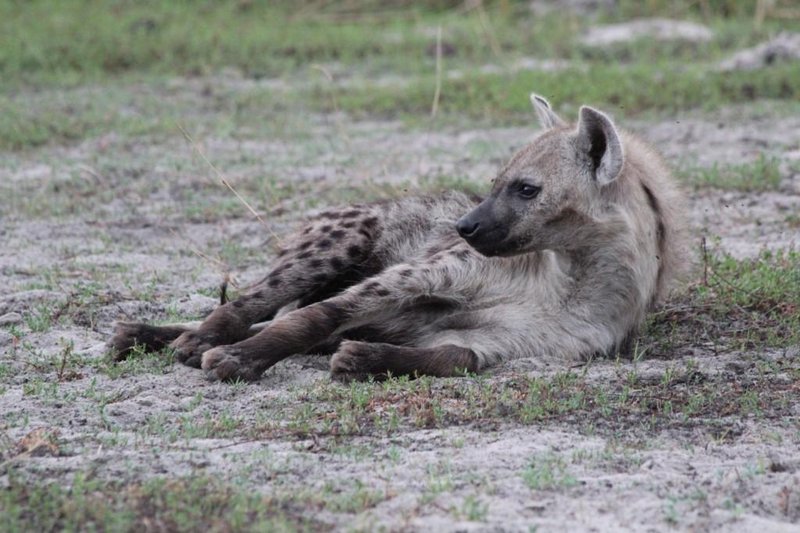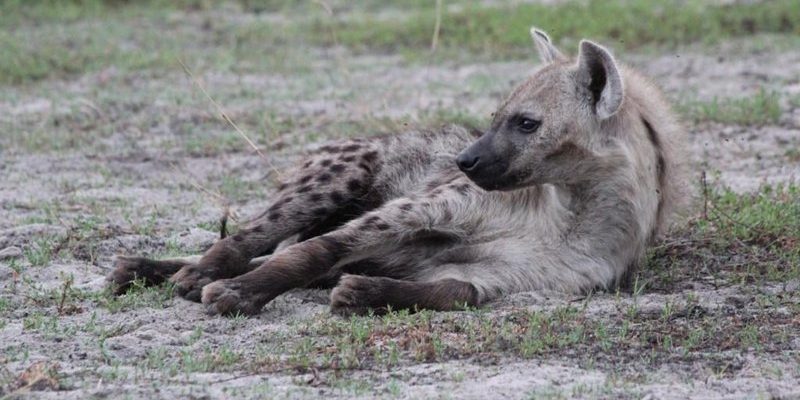
These animals aren’t just about their notorious laughs or scavenging habits; they’re also masters of tough terrains like savannas, grasslands, and even arid deserts. So, let’s explore how hyenas manage to not just survive but thrive in environments that can be downright harsh.
Unique Adaptations for Survival
Hyenas are remarkable for their physiological and behavioral adaptations. One of their standout features is a strong bite. Their jaws can crush bones, allowing them to access nutrients that many other animals can’t reach. Imagine trying to get into a tough nut while others struggle with the shell. That’s hyenas for you!
Additionally, hyenas have robust digestive systems. Their stomachs can handle decaying meat, which many predators would find toxic. This adaptation plays a key role in their survival, especially when food is scarce. They’ll consume parts of a carcass that other scavengers might avoid, leaving nothing to waste.
They also have excellent night vision. In the dark, their eyes are like little flashlights, enabling them to hunt or scavenge effectively. This makes them more active at night, capitalizing on the cooler temperatures and a less competitive atmosphere. It’s a bit like choosing to run errands after sunset when the streets are quieter!
Social Structure: Living in Packs
Hyenas are social creatures that thrive in groups called clans. Their social structure is complex, often characterized by female dominance. This means that females typically lead the pack, making critical decisions about hunting and territory. You might think of them as the CEOs of their clan, guiding their members with impressive coordination.
Living in a pack has its advantages. It allows hyenas to tackle larger prey and fend off larger predators. Think about a group project where teamwork is essential to succeed. When hunting, they rely on communication, employing vocalizations to coordinate their movements. This teamwork not only increases their success rate but also helps ensure that the clan gets enough food to survive.
In essence, their social nature provides a safety net. If one member is struggling, the others often step in, just like friends helping each other out in tough times. This strong bond is vital in harsh environments, where individual survival can be challenging.
Adaptability in Diet
Hyenas are opportunistic feeders. This means they’ll eat just about anything when food gets scarce. Their diet consists of small mammals, carrion, and even fruits. This flexibility is like having a backup plan that can save the day. If their preferred food isn’t available, they’ll adapt quickly, switching to whatever’s on the menu.
When hunting, they can consume a significant amount of food at once, allowing them to go for days without eating again. This ability to gorge is crucial for survival in harsh environments where food supply can fluctuate wildly. For instance, a recent hunt might yield a massive kill that keeps the entire clan satisfied for a week.
Moreover, their scavenging habits often lead to surprising discoveries. Hyenas can find food sources that other predators overlook, giving them a competitive edge. This knack for resourcefulness is a testament to their intelligence and adaptability in trying environments.
Water Conservation Strategies
Water is essential for all life, and in tough habitats, hyenas have learned to be savvy about conservation. Interestingly, hyenas can extract moisture from the food they eat, reducing their need to drink water directly. This is especially important in arid regions where water holes may be few and far between.
When they do need to drink, hyenas are skilled at seeking out hidden water sources. They’ll travel long distances, using their keen sense of smell to locate water. This ability to sniff out resources is akin to having a built-in GPS system that helps them navigate their often challenging environments.
Moreover, their bodies have adapted to withstand periods of dehydration. They can go without water longer than many other animals. This impressive survival skill ensures that even during dry spells, they can make it through tough times without feeling too parched.
Role in the Ecosystem
Hyenas play a significant role in their ecosystems. As scavengers, they help maintain ecological balance by cleaning up dead animals. This process removes potential breeding grounds for diseases that could affect other wildlife. Think of them as nature’s cleanup crew, ensuring the environment stays healthy.
Their hunting habits also control prey populations. By taking down sick or weak animals, they help keep the ecosystem robust. This natural selection process ensures that the strongest genes are passed on, maintaining the biodiversity that keeps the ecosystem thriving.
In this way, hyenas aren’t just survivors; they are vital players in the intricate web of life. Their presence helps sustain the ecological balance, illustrating how every creature, even those perceived as unappealing, contributes to the health of the environment.
Communication and Social Strategies
Hyenas have a rich communication system, using vocalizations, body language, and even scent markings to convey messages. Their laughter-like calls might sound amusing, but they serve a deeper purpose—signaling location, mood, or even alarm. It’s like a secret language among friends, helping them stay connected in the wild.
Body language is equally important. Hyenas use various postures and movements to communicate status and intentions within the clan. A confident swagger might indicate dominance, while a crouched stance could signal submission. These signals help maintain order and harmony within the pack, preventing conflicts that could arise in stressful situations.
Scent marking is another essential aspect of their communication strategy. By leaving their scent in key locations, they establish territory and send messages to other clans. It’s akin to putting up a sign that says, “This spot belongs to us!” These methods of communication not only strengthen their social bonds but also play a crucial role in their survival in harsh environments.
Hyenas are often labeled as the villains of the animal kingdom, but their story is so much richer than that. With their incredible adaptations, social structures, and unique survival strategies, they navigate harsh environments with impressive skills. From strong jaws and resourceful diets to clever communication, hyenas are equipped to handle the challenges of their habitats.
Understanding how hyenas survive gives us a glimpse into the wonders of nature and the intricate connections that exist within ecosystems. So next time you hear that iconic laugh, remember there’s more to the story—a tale of resilience, teamwork, and adaptability in the face of adversity.

